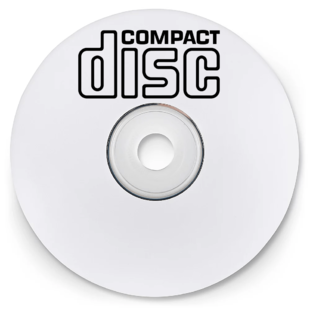Compact disc

| |
| Compact disc | |
| Developer | Philips, Sony |
|---|---|
| Publisher | Various |
| Systems | Dreamcast (CDDA, MIL-CD) PlayStation (CDDA, CD-ROM) PlayStation 2 (CDDA, CD-ROM) PlayStation 3 (CDDA) Sega CD (CDDA, CD-ROM, CD-R) Sega Saturn (CDDA, CD-ROM) TurboGrafx-CD (CDDA, CD-ROM, CD-R) Xbox (CDDA) Xbox 360 (CDDA) Xbox One (CDDA) Xbox Series X/S (CDDA) |
| Released | CDDA JP: October 1, 1982 EU/NA: March 1983 CD-ROM WW: 1984 CD-i WW: 1990 CD-R WW: 1990 CD-RW WW: 1997 |
| Added to Museum | December 25, 1992 |
The Compact disc is a digital optical storage format.
Compact Disc Digital Audio (CDDA)
The compact disc format was originally designed by Philips and Sony to store audio through the Compact Disc Digital Audio (CDDA), also known as Audio CD, standard. Audio CDs were first released in Japan on October 1, 1982, and in Europe and North America in March 1983.
Compact Disc Read-Only Memory (CD-ROM)
The compact disc format was extended by Sony and Philips for data storage through the Compact Disc Read-Only Memory (CD-ROM) standard. CD-ROMs were first released by Denon and Sony in 1984.
Compact Disc-Interactive (CD-i)
Philips and Sony developed the Compact Disc-Interactive (CD-i) format. It extended CDDA and CD-ROM to combine audio, text, and graphics. Philips and other manufacturers manufactured CD-i consoles, which used the CD-i format for video games, educational software, and films. CD-i consoles and discs were first released in 1990.
Compact Disc-Recordable (CD-R)
The compact disc format was extended again by Philips and Sony in a write-once format, originally known as the Compact Disc Write-Once when first designed in 1988, then as the Compact Disc Recordable (CD-R) when it was released in 1990.
Compact Disc-ReWritable (CD-RW)
The compact disc format was extended by Philips into a rewritable format known as the Compact Disc-ReWritable (CD-RW). CD-RWs were first released in 1997.